Breastfeeding Rates in the U.S.
The map below shows the breastfeeding rates in the United States by state as of 2018 from the data from the National Survey of Children’s Health.
Coming soon!
The below graph also shows trends in breastfeeding over the past few years in the United States. As seen below, there is a consistently steady increase in the rate of children ever breastfed across all timeframes. Data was retrieved from the National Immunization Survey.
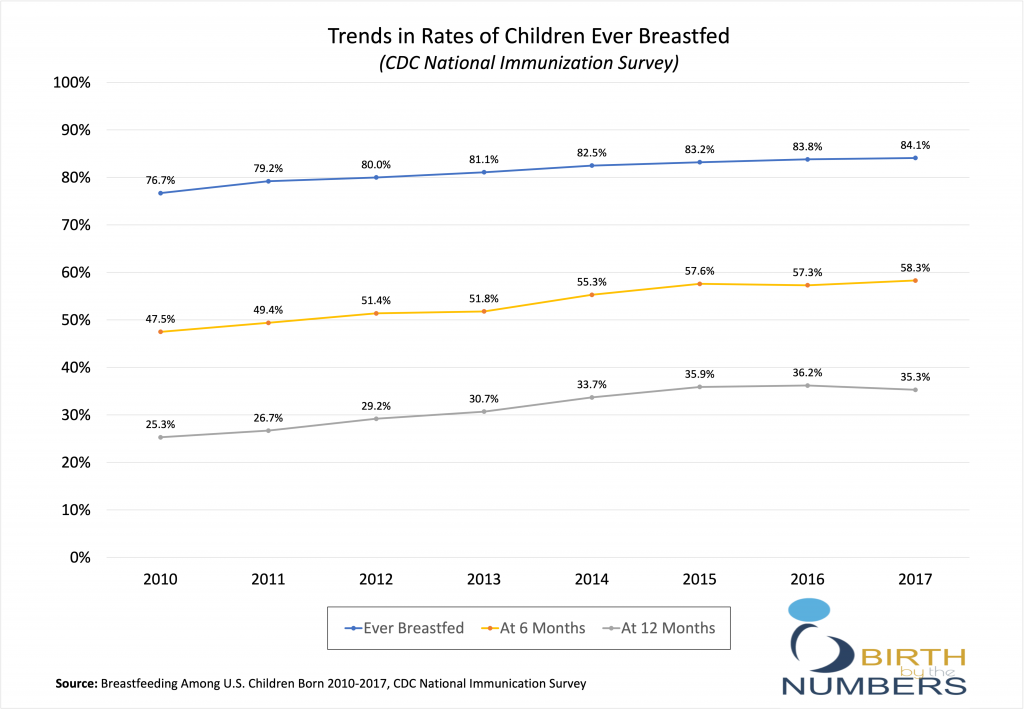
Breastfeeding rates vary by demographics, especially by race.
Below are the maps of rates of infants breastfed at discharge by different races among the United States, based on data from the Natality dataset gathered from CDC WONDER.
Maps coming soon.
In addition, the below graphs also summarize the rates of infants breastfed at discharge by race overall, as of 2019. White breastfeeding people have the highest breastfeeding rate, while Asian breastfeeding people have the lowest. Note the high percentage of unknown/not reported breastfeeding in Asian people. More research needs to be done to understand this alarming statistic.
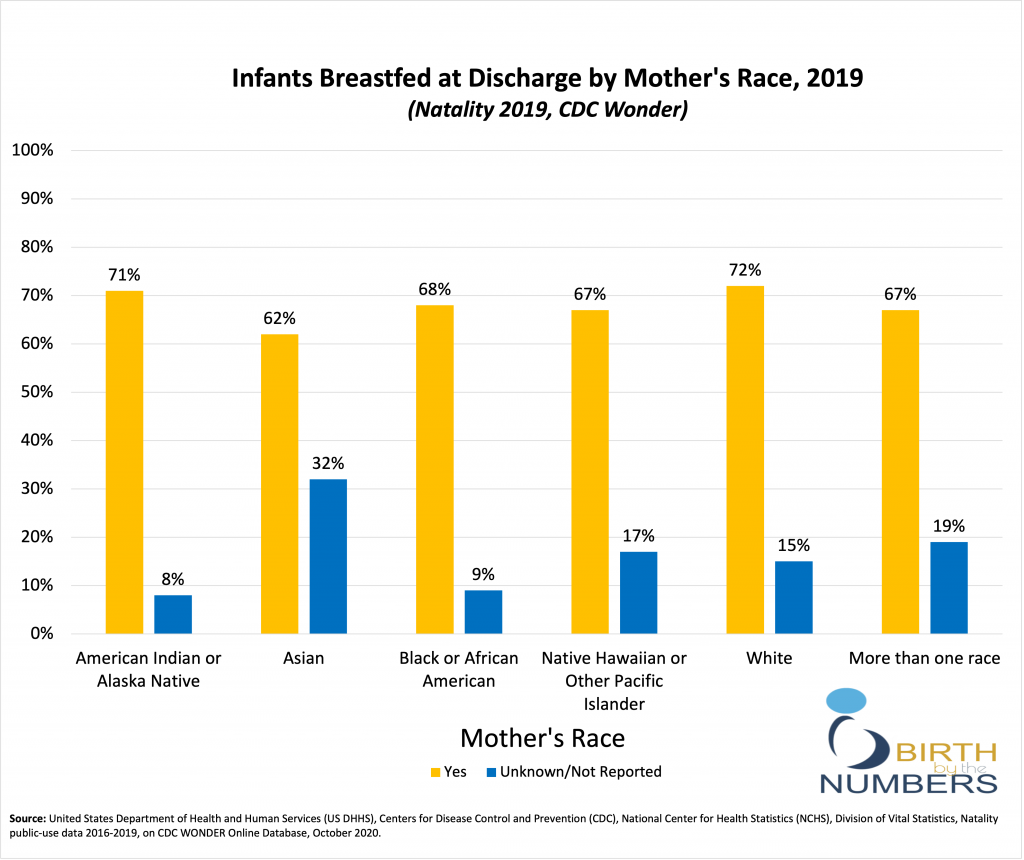
There are also differences by maternal age category. Rates of infants breastfed at discharge is lowest in people under the age of 15 and highest among people ages 30-34. In the graph below, we see a normal distribution with the peak rate in the 30-34 age group and a steady decline in breastfeeding people ages 35+.
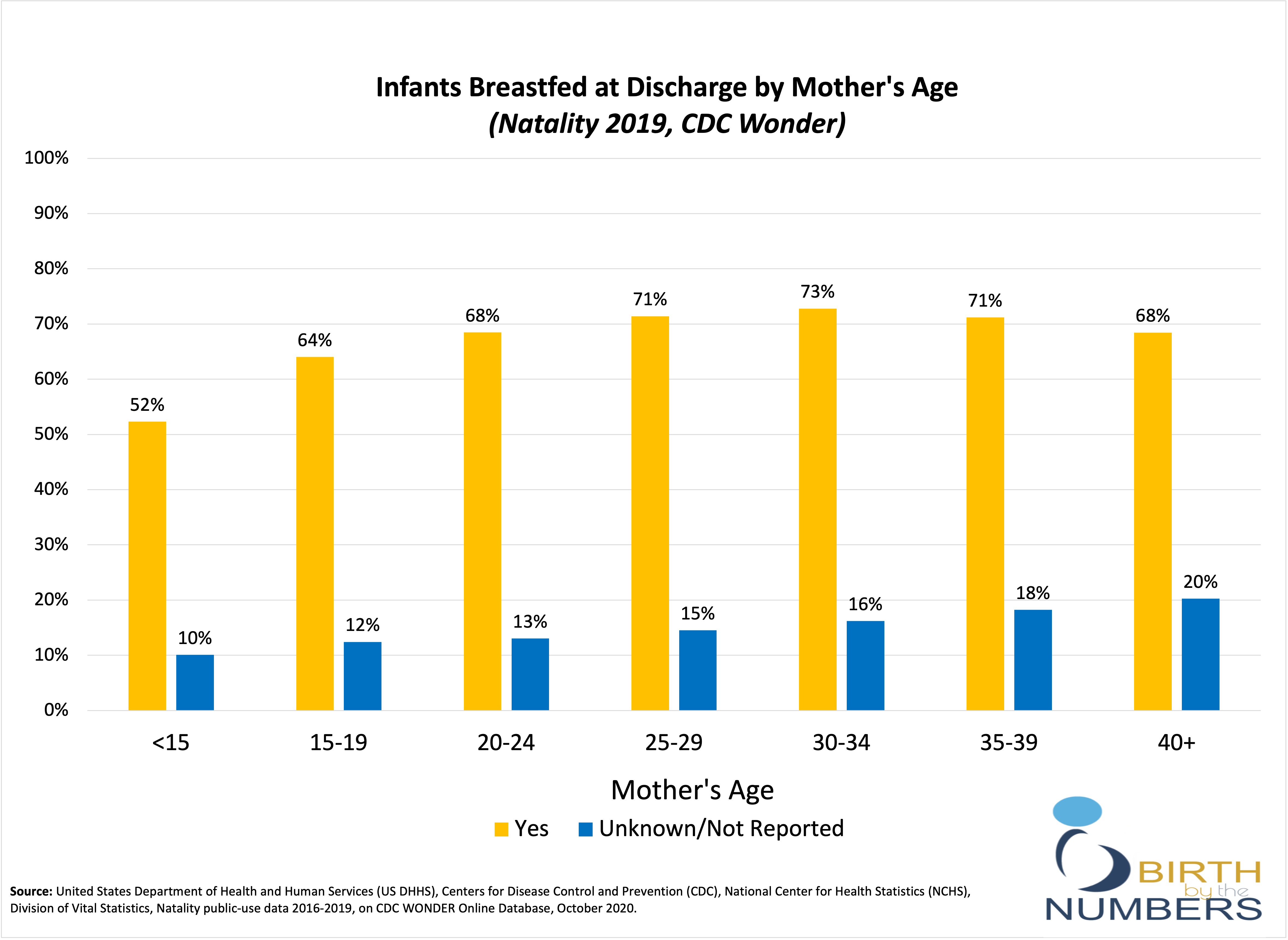
Based on data from the NSCH (18-19), children under the age of 3 born to parent(s) who were not born in the United States are more likely to have ever been breastfed.
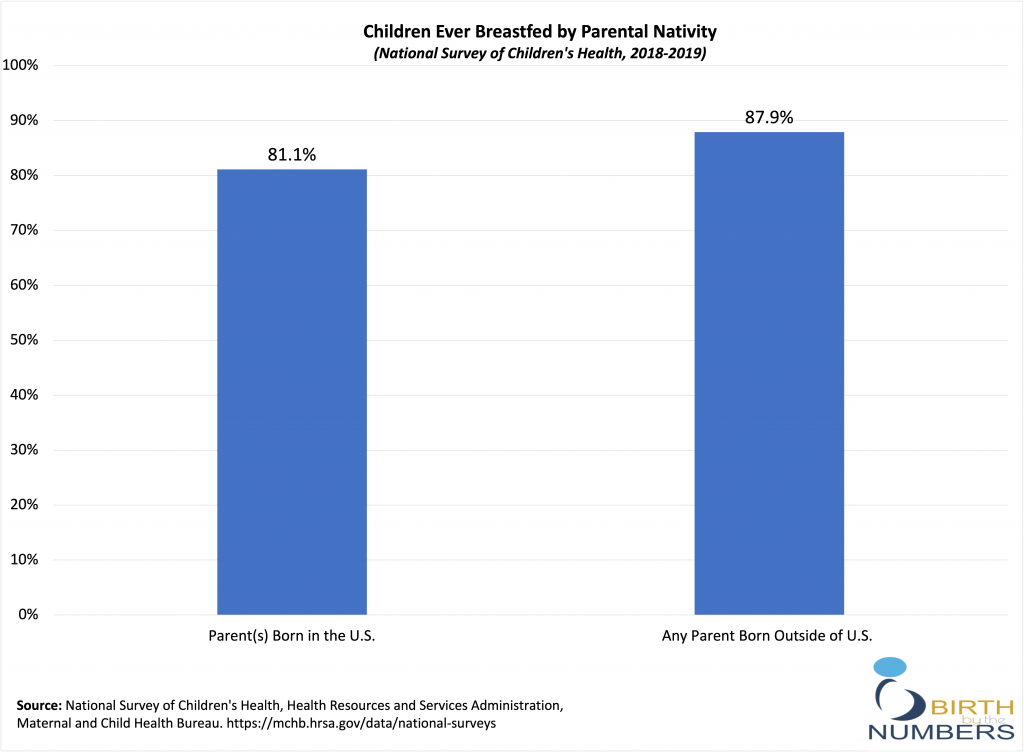
In addition, those born into families with lower household income are less likely to have ever been breastfed.
The federal poverty level (FPL) is the guideline for poverty based on household income and is used by many programs to determine eligibility for financial assistance.
 Related to the household income levels above, birthing people who had Medicaid pay for the delivery were less likely than birthing people who had private insurance or paid out-of-pocket to have infants breastfed at discharge.
Related to the household income levels above, birthing people who had Medicaid pay for the delivery were less likely than birthing people who had private insurance or paid out-of-pocket to have infants breastfed at discharge.
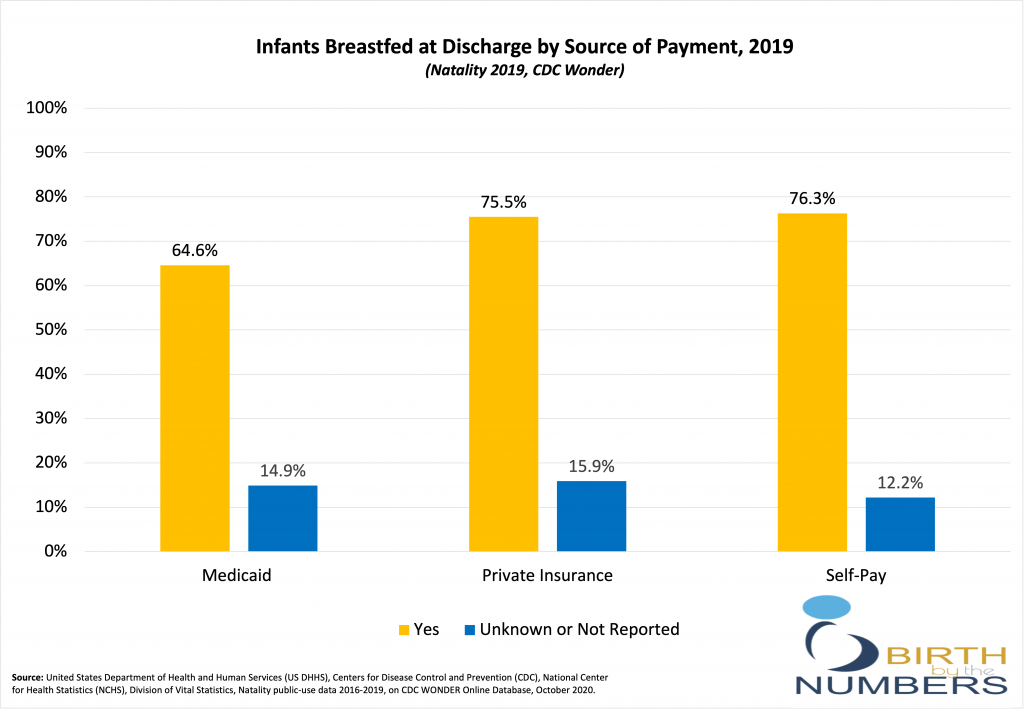
We see differences in rates of infants ever breastfed at discharge by live birth order. The first born is the most likely to have been breastfed at discharge. There is a steady decrease in the rate of infants breastfed at discharge from the second infant to the sixth infant. After that, there is an increase in rates of infants breastfed at discharge.

The following statistics were reported in Listening to Mothers in California. This report examines the experiences and thoughts of mothers to give a greater perspective on the reasoning behind the numbers.
- 67% of women surveyed intended to exclusively breastfeed their babies but only 76% of mothers with that intention were actually able to breastfeed exclusively.
- 84% of women reported that hospital staff were supportive in breastfeeding
- In hospitals with staff supporting breastfeeding, 97% of women who intended to breastfeed did so exclusively (76%) or both breastfed and fed formula (21%).
- In hospitals with staff who discouraged breastfeeding, only 35% of women who intended to breastfeed exclusively did so.
- Women who had a midwife present at the birth were more likely to exclusively breastfeed (76%) compared to women who had an OBGYN (61%).
- 42% of women reported being able to breastfeed for as long and they would have liked.
- White women were least likely to be satisfied with the duration of breastfeeding (31%) while Asian/Pacific Islander mothers were most likely to be satisfied (61%).
- 59% of mothers who were able to stay home with their baby for as long as they wanted were able ti breastfeed for as long as they would have liked while only 31% of mothers who were not able to stay with their baby as wanted were satisfied with duration of breastfeeding


